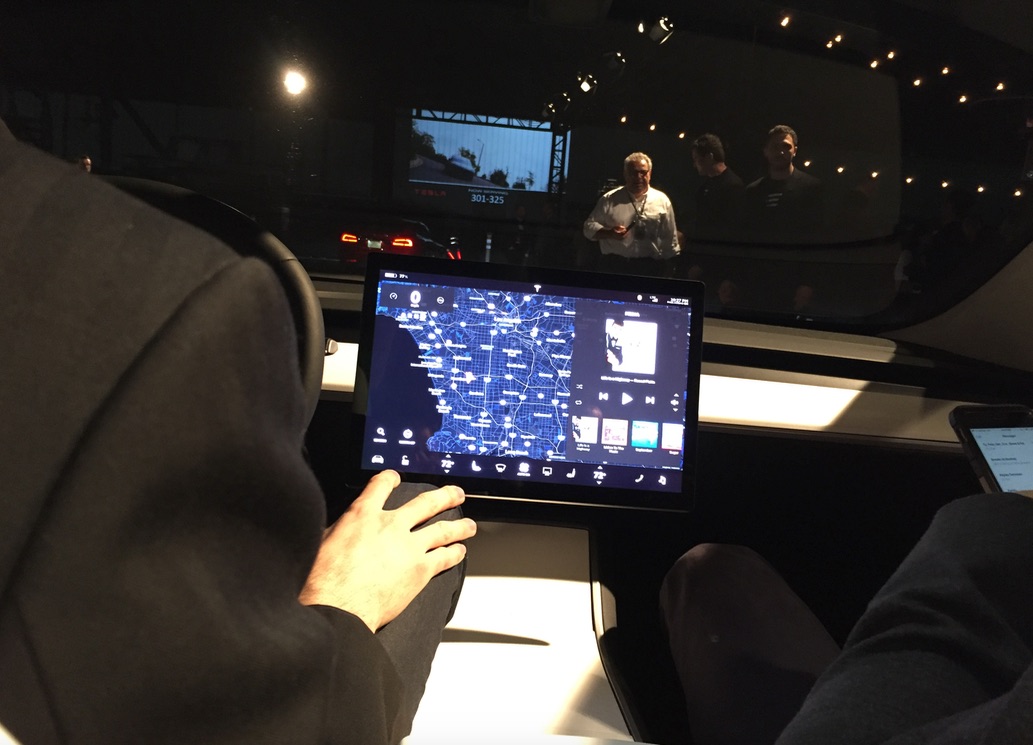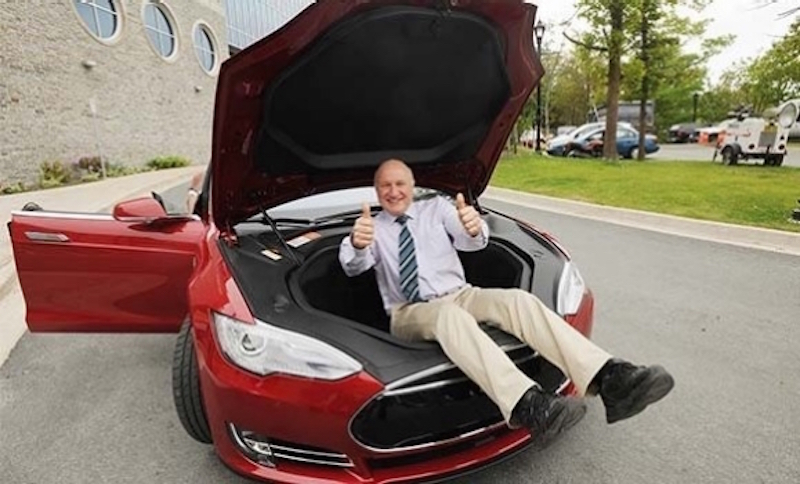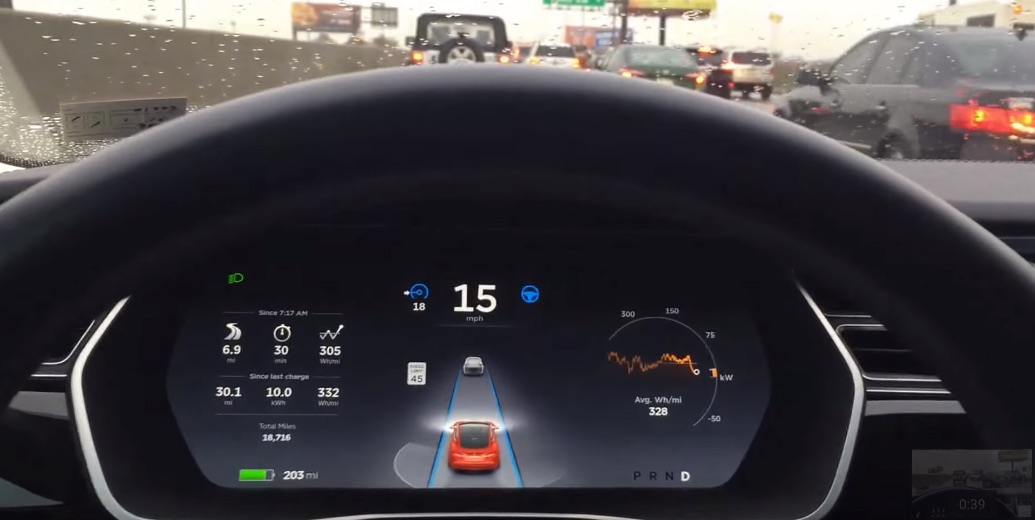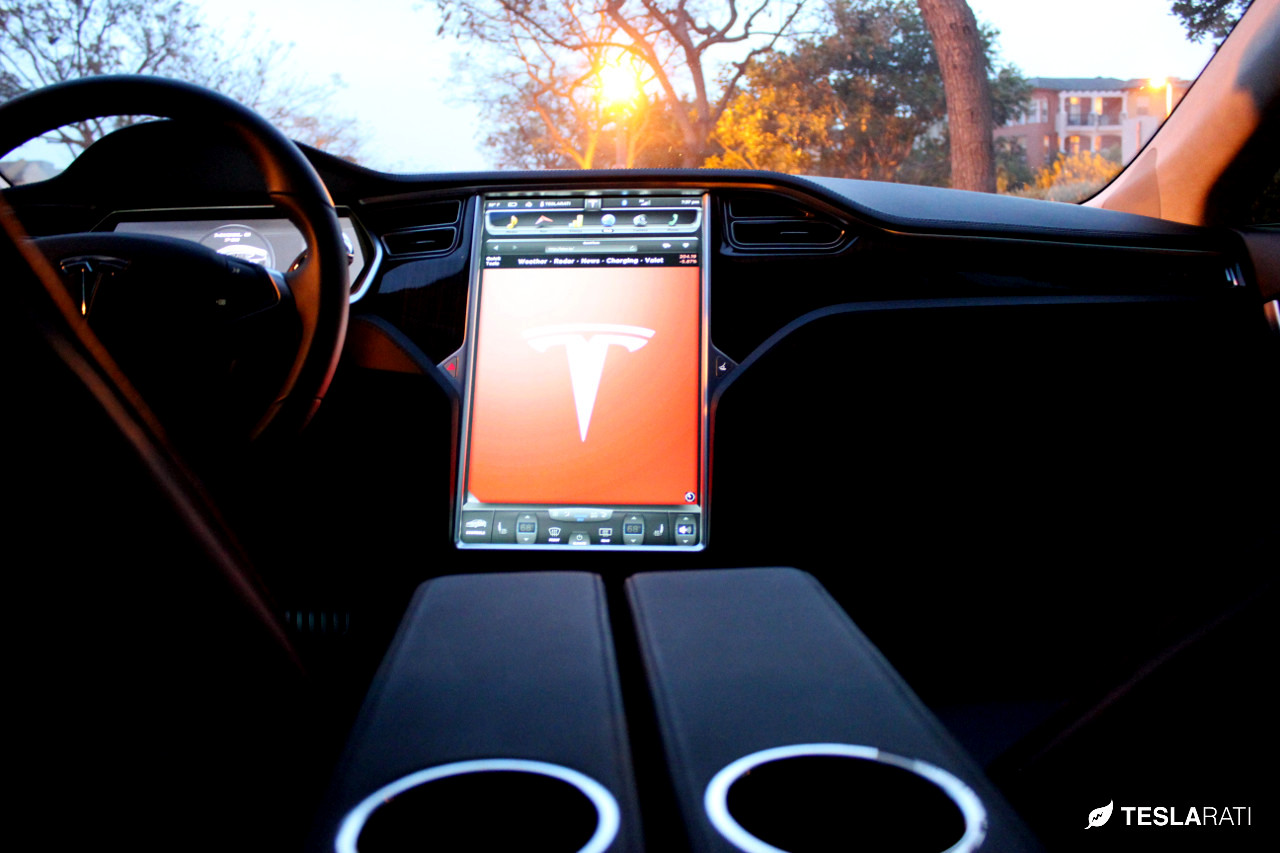News
Tesla ride-sharing program: exploring its practicality and real world benefits
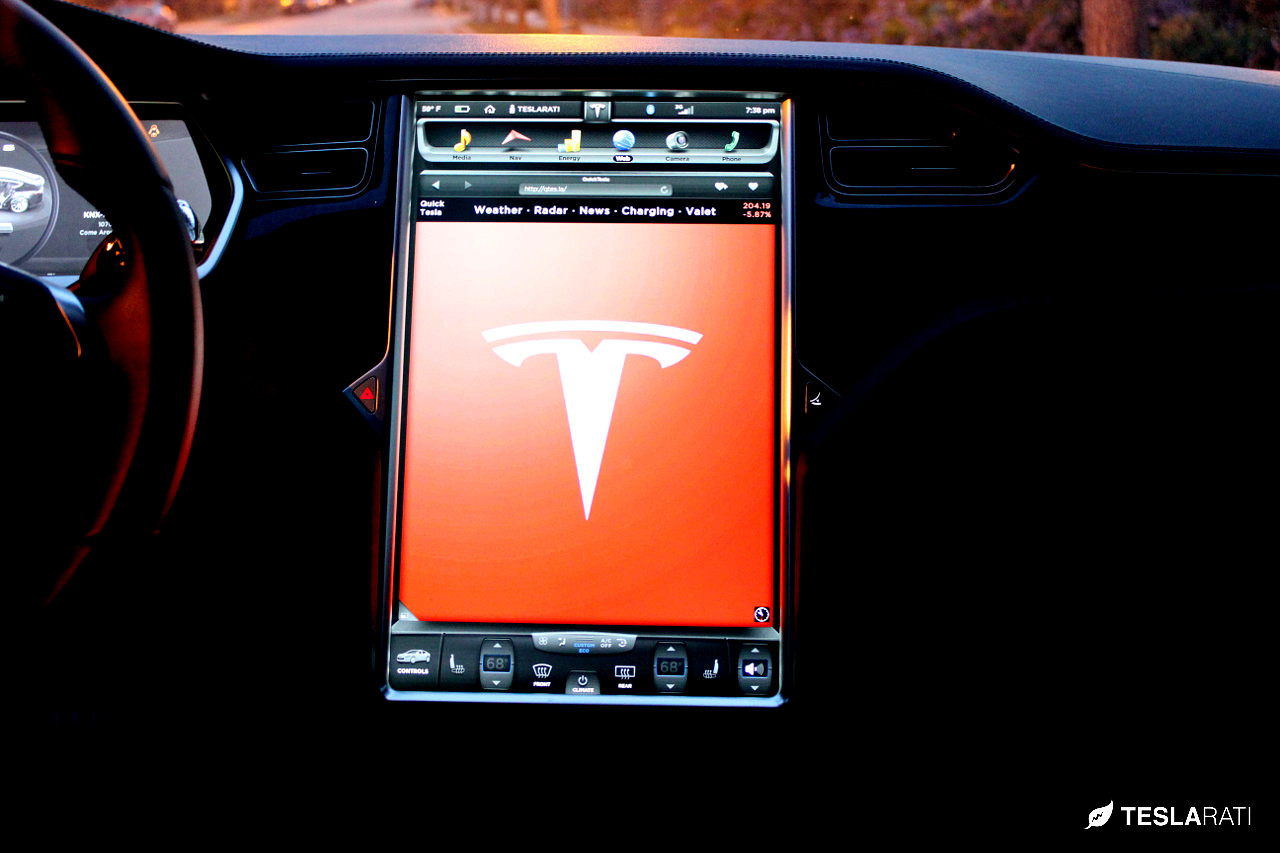
Many of the Tesla faithful sat with bated breaths waiting for the Master Plan Part 2 to be published. Once it did, we devoured every word, with some words more surprising than others. Making a pickup truck, while not surprising is thought-provoking. Ride-sharing as a concept, also not very surprising. Ride-sharing using the autonomously driven car that you personally own? Now there’s something to think about.
“In cities where demand exceeds the supply of customer-owned cars, Tesla will operate its own fleet, ensuring you can always hail a ride from us no matter where you are.” – Elon Musk
Let’s consider for a moment what this might look like.
Practicality
My initial thought of an autonomous Tesla was ride-sharing within the same household. My spouse and I have jobs that are in opposite directions, but we also work different hours with him having the far shorter commute. That being said, it would technically be feasible for a car to drop me off at work and make it back home just in time to take him. Then, it would have plenty of time to come back to me before my work day is done. Driving me home would also be tight – but I think the car would make it just in time to drop me off and go grab him. (Anyone else getting wide-eyed at the thought of a car driving you around? I sure am!) The only downside that I can think of is that both of us, at times, like to run errands on a lunch break. Surely with a little planning we could just schedule who will have the car available mid day. For example, on his day the car wouldn’t come back to get me until later in the day. Should I need to use it, it could come back to me earlier. All of this sounds technically feasible but the miles would add up quickly. Over 90 miles a day, to be exact; double what we currently drive combined. This may be obvious, since the car is making each round trip twice, but on paper that distance really hits home. As for cost, our electricity use at home would clearly go up. What would go down, however, is the cost associated with having a second car. I only estimate that the Tesla costs us $50/month to power now but even if it went up to $150, that delta is far less than the savings associated with not having a second car to insure and maintain. (Let alone pay to own/lease, depending on how expensive a car you’d be giving up.)
In this regard, I see practicality as a wash. If technically feasible with your schedule as it would be with ours, it may work. Getting past the mental barrier of having only one car between two adults who drive and work full time however, may be a challenge. Tesla has shifted thinking in many ways already, so it’s possible this will as well. I keep trying to think of reasons why we need two cars but aside from our daily jobs, which a car that can drive us to negates, all I’m coming up with is the rare occasion where we both need to go somewhere different at the same time. Truth be told, I’m sure even that could be worked out in most cases. In those where it can’t? Summon up another autonomous Tesla to drive you where you need to be. Again, this comes with a cost but again, it pales in comparison to the cost to own a second car that spends over 90% of its life parked anyway.
Public Domain
Most Tesla owners I know treat their cars with extreme care. I am no exception. The thought of a stranger taking up residence in my car without me sends shivers down my spine. I guess there is only so much damage a person could do sitting in the back seat being chauffeured, presumably while staring down at their smart phone to pass the time. The after 2am crowd, on the other hand, poses additional risks but I for one wouldn’t send my car out that late. A sick passenger is one danger, sharing the road with impaired drivers in (gasp!) manual driving mode is another. How do you specify who is eligible for pick up anyway? Imagine the headline “Tesla picks up prison escapee and drives it across the state line.” Add in your fear here (underage runaway, woman in labor, very sweaty marathon runner.)
Availability
This is the main point I’ve heard brought up in my quick chats about this topic. How do you schedule your car to go off and pick people up within a strict window until you need it again? How does traffic play a part? Do you wait until you’re home for the evening and send it out, knowing full well it’ll definitely make it home by the next morning? Or do you risk letting it take a 4pm pickup when doing so could leave you stranded at the office? How far would you let your car go anyway? What about charge? You might need a certain range to get home so can you restrict your car’s pickup jobs to a certain distance? What if it’s cold outside?
In this regard, I have a lot more questions than answers. I have no interest in my car being late to bring me to or from work. It’s my car after all. I have even less interest in being picked up without enough range to get me where I’m going. I live in a major city and I don’t expect to see a Supercharger within our limits any time soon. There are now chargers within 100 miles of me in all major directions, which very easily enables long distance travel as intended. I’m happy with this, as I certainly don’t find myself needing a fast charge close to home. If I plan on letting my car work all day however, that may change. Letting it go home and plug in is impractical at the current rate of my charging setup. 29 miles per hour doesn’t speak well to quick turnaround.
Cost
All of the questions above can be overlooked for a price. The big question is what that price might be. In my own life, I wouldn’t entertain the idea if it made me $100 per month. If it made me $1,000, I’d be the first in line to sign up. Everyone has a different sensitivity to price but I’d be willing to bet that even the least price sensitive people would at least consider using their Tesla in this way if the resulting income matched or exceeded their car payment. Getting to own and drive what I consider the world’s best car for no monthly payment is an offer that’d be too hard to refuse.
Those were just arbitrary numbers though. What might be realistic? I’d like to think that tomorrow’s Tesla is comparable to today’s Uber Black. My Uber app only gives prices for Uber X but I know that Black costs more. At this very moment, a quick ride from my work place to the very center of our downtown is $12 on Uber X. Let’s estimate that it would be $20 for Black. In fact, let’s assume the average ride would net $20. The car would certainly be smart enough to try to do another pickup on the way back to me so I can probably count on $40 as a “round trip” made during my work day. If I let the car drive two round trips on Friday and Saturday nights as well as one each work day, that bring us up to 9 round trips per week, or $360. Already, this isn’t sounding so bad. Let’s scale that down due to some Tesla profit and market saturation. It still seems very reasonable that with little time commitment, $200 per week is reasonable. We’re at $860 per month. If you, like me, go out into a city once or twice a month yourself and spend anywhere from $10-30 in parking or cab rides, you could be earning/saving a combined $900 each month. I suppose I just learned that yes, I’d probably consider letting my car go out and work for me. Even at half the dollars I’m picturing, a Model 3 payment would be covered.
Convenience
Airports. Nights out drinking. Events out of town that force a one night hotel stay. Finding parking in crowded places. Paying for parking at concert or sports venues. These are some of the most popular reasons people today might use ride sharing services even if they have a car. It would sure be convenient if your own car could handle these occasions for you. This, I know, has more to do with autonomy than making the decision to allow your car to work for you. But it’s only a small leap from one to the other. I say this because if my car dropped me off at an Eagles game, I wouldn’t want it paying for parking while it waits. I’d want it headed back home, because that’s a safe place for it to wait. But if it’s going to driving alone anyway, why not pick someone up? It’ll be an exceptionally convenient life when cars can drive for us.
Implementation
How might a program like this actually work? Given a very elementary level of consideration, I imagine the same way Uber works now. I picture a beautiful and streamlined app interface on your smart phone that allows you to log in when you want the car to be able to drive. I imagine the ability to draw a border around the distance you’re willing to let your car travel, as well as the ability to set a time that the car has to return by. Many people far smarter than I will program fantastic algorithms that only allow the car to accept rides that, given traffic and other factors, will get the car back within its allowable time window. I also picture the ability to send the car out with a child’s car seat, if summoned. That would require a bit of interaction, as the app would have to notify you to install it first unless you leave one installed. Speaking of app, I imagine it would notify you that it’s about to head out. (“Mom! I’m going out for a bit. Be back in an hour!”)
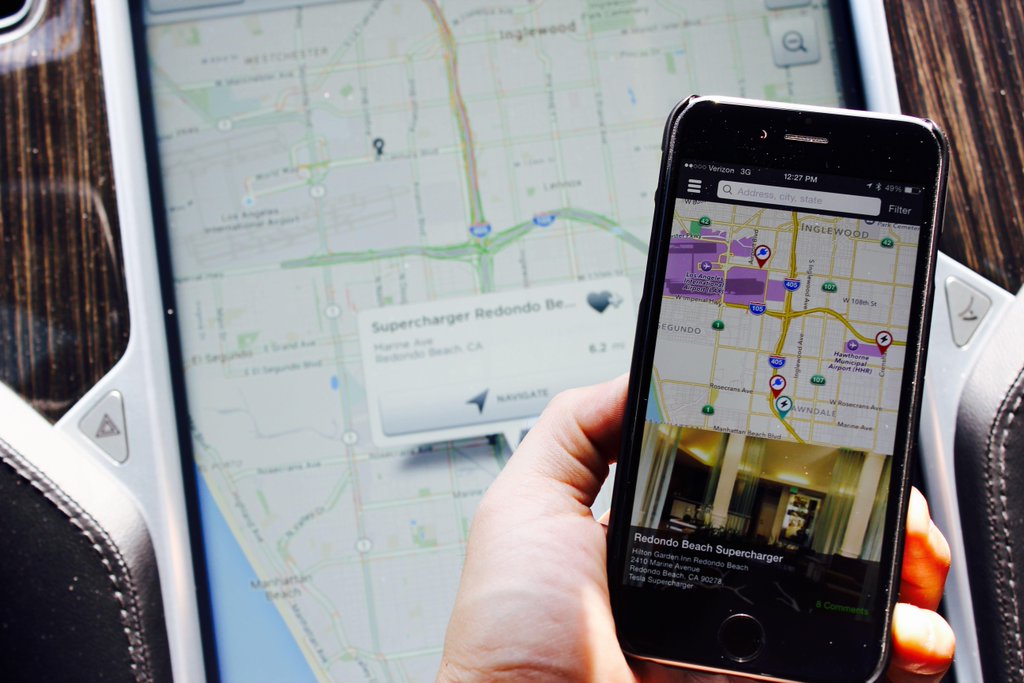
Supercharger map with crowdsourced recommendations from Tesla owners
Challenges
Much like I expect to be challenging for vehicle autonomy in general, the regulatory nightmare that is a driver-less vehicle will be the biggest hurdle to jump, in my humble opinion. Those aforementioned people way smarter than I? They’ll figure out programming the self driving technology sooner than later. They’ve already done a lot. Those perhaps-not-as-smart people we elect to office? Those folks I’m not too confidant in. Well, not them per say. The big jumbled mess of a political system that in the United States and so many other places churns out rules based on the almighty dollar rather than the good of citizens. Right here in my own home town, Uber is technically not legal. It’s legal in the state, just not the city, which has a cluster of a Parking Authority that somehow controls taxis. Except, by the way, when the Democratic National Convention came to town around the same time our local train system was having problems. Then the city made a special exception to “let” Uber operate. (Spoiler alert: it operates anyway.) My point is to illustrate that all the engineering and data in the world won’t guarantee that Tesla will even be allowed to operate driver-less ride sharing services as quickly as the technology itself will be available. That to me, is challenge numero uno.
The technology itself though, still has a lot of work ahead. Just like any parent tells their teenage driver “It’s not you, it’s the other cars on the road I’m worried about.” A Tesla can be a flawless driver 100% of the time on empty roads and that still won’t even come close to accurately predicting how it will drive when sharing the roads with distracted drivers, well-meaning drivers in poor weather conditions, and anything in between. Temporary lane restrictions are hard to compute, as is seeing a car that you just know is going to make a move without a signal. Years of driving experience allows people to read another car’s “body language” so to speak. Will a car ever be able to do the same?
An extension on the both of the topics above, I can only imagine the bureaucratic and technological nightmare that will result if (when!) cars have to learn to talk to each other. Surely that’s where we are headed. It’d be safer that way. But can you see BMW, who I suspect is a little hurt right now, cooperating with Tesla? I can’t but I hope they’ll have no choice. Step up or step aside.
Production vs. demand is another potential challenge. If the ability to buy a car and have it work for you to the tune of effectively negating your payment arrives sooner than Tesla exponentially increases its output of cars, we’ll have a problem. Maybe I’m biased, but I assume a darn lot of people would jump at the chance of driving a car that pays for itself. I mean, I wasn’t wrong when I called myself crazy for assuming there would be 50-100,000 people would put in reservations for a Model 3. Well, I was wrong, but in the right direction.
What do you envision ride-sharing capability looking like? What challenges will it face? Drop me a comment.

Elon Musk
Elon Musk’s X will start using a Tesla-like software update strategy
The initiative seems designed to accelerate updates to the social media platform, while maintaining maximum transparency.

Elon Musk’s social media platform X will adopt a Tesla-esque approach to software updates for its algorithm.
The initiative seems designed to accelerate updates to the social media platform, while maintaining maximum transparency.
X’s updates to its updates
As per Musk in a post on X, the social media company will be making a new algorithm to determine what organic and advertising posts are recommended to users. These updates would then be repeated every four weeks.
“We will make the new 𝕏 algorithm, including all code used to determine what organic and advertising posts are recommended to users, open source in 7 days. This will be repeated every 4 weeks, with comprehensive developer notes, to help you understand what changed,” Musk wrote in his post.
The initiative somewhat mirrors Tesla’s over-the-air update model, where vehicle software is regularly refined and pushed to users with detailed release notes. This should allow users to better understand the details of X’s every update and foster a healthy feedback loop for the social media platform.
xAI and X
X, formerly Twitter, has been acquired by Elon Musk’s artificial intelligence startup, xAI last year. Since then, xAI has seen a rapid rise in valuation. Following the company’s the company’s upsized $20 billion Series E funding round, estimates now suggest that xAI is worth tens about $230 to $235 billion. That’s several times larger than Tesla when Elon Musk received his controversial 2018 CEO Performance Award.
As per xAI, the Series E funding round attracted a diverse group of investors, including Valor Equity Partners, Stepstone Group, Fidelity Management & Research Company, Qatar Investment Authority, MGX, and Baron Capital Group, among others. Strategic partners NVIDIA and Cisco Investments also continued support for building the world’s largest GPU clusters.
News
Tesla FSD Supervised wins MotorTrend’s Best Driver Assistance Award
The decision marks a notable reversal for the publication from prior years, with judges citing major real-world improvements that pushed Tesla’s latest FSD software ahead of every competing ADAS system.

Tesla’s Full Self-Driving (Supervised) system has been named the best driver-assistance technology on the market, earning top honors at the 2026 MotorTrend Best Tech Awards.
The decision marks a notable reversal for the publication from prior years, with judges citing major real-world improvements that pushed Tesla’s latest FSD software ahead of every competing ADAS system. And it wasn’t even close.
MotorTrend reverses course
MotorTrend awarded Tesla FSD (Supervised) its 2026 Best Tech Driver Assistance title after extensive testing of the latest v14 software. The publication acknowledged that it had previously criticized earlier versions of FSD for erratic behavior and near-miss incidents, ultimately favoring rivals such as GM’s Super Cruise in earlier evaluations.
According to MotorTrend, the newest iteration of FSD resolved many of those shortcomings. Testers said v14 showed far smoother behavior in complex urban scenarios, including unprotected left turns, traffic circles, emergency vehicles, and dense city streets. While the system still requires constant driver supervision, judges concluded that no other advanced driver-assistance system currently matches its breadth of capability.
Unlike rival systems that rely on combinations of cameras, radar, lidar, and mapped highways, Tesla’s FSD operates using a camera-only approach and is capable of driving on city streets, rural roads, and freeways. MotorTrend stated that pure utility, the ability to handle nearly all road types, ultimately separated FSD from competitors like Ford BlueCruise, GM Super Cruise, and BMW’s Highway Assistant.
High cost and high capability
MotorTrend also addressed FSD’s pricing, which remains significantly higher than rival systems. Tesla currently charges $8,000 for a one-time purchase or $99 per month for a subscription, compared with far lower upfront and subscription costs from other automakers. The publication noted that the premium is justified given FSD’s unmatched scope and continuous software evolution.
Safety remained a central focus of the evaluation. While testers reported collision-free operation over thousands of miles, they noted ongoing concerns around FSD’s configurable driving modes, including options that allow aggressive driving and speeds beyond posted limits. MotorTrend emphasized that, like all Level 2 systems, FSD still depends on a fully attentive human driver at all times.
Despite those caveats, the publication concluded that Tesla’s rapid software progress fundamentally reshaped the competitive landscape. For drivers seeking the most capable hands-on driver-assistance system available today, MotorTrend concluded Tesla FSD (Supervised) now stands alone at the top.
News
Elon Musk’s Grokipedia surges to 5.6M articles, almost 79% of English Wikipedia
The explosive growth marks a major milestone for the AI-powered online encyclopedia, which was launched by Elon Musk’s xAI just months ago.

Elon Musk’s Grokipedia has grown to an impressive 5,615,201 articles as of today, closing in on 79% of the English Wikipedia’s current total of 7,119,376 articles.
The explosive growth marks a major milestone for the AI-powered online encyclopedia, which was launched by Elon Musk’s xAI just months ago. Needless to say, it would only be a matter of time before Grokipedia exceeds English Wikipedia in sheer volume.
Grokipedia’s rapid growth
xAI’s vision for Grokipedia emphasizes neutrality, while Grok’s reasoning capabilities allow for fast drafting and fact-checking. When Elon Musk announced the initiative in late September 2025, he noted that Grokipedia would be an improvement to Wikipedia because it would be designed to avoid bias.
At the time, Musk noted that Grokipedia “is a necessary step towards the xAI goal of understanding the Universe.”
Grokipedia was launched in late October, and while xAI was careful to list it only as Version 0.1 at the time, the online encyclopedia immediately earned praise. Wikipedia co-founder Larry Sanger highlighted the project’s innovative approach, noting how it leverages AI to fill knowledge gaps and enable rapid updates. Netizens also observed how Grokipedia tends to present articles in a more objective manner compared to Wikipedia, which is edited by humans.
Elon Musk’s ambitious plans
With 5,615,201 total articles, Grokipedia has now grown to almost 79% of English Wikipedia’s article base. This is incredibly quick, though Grokipedia remains text-only for now. xAI, for its part, has now updated the online encyclopedia’s iteration to v0.2.
Elon Musk has shared bold ideas for Grokipedia, including sending a record of the entire knowledge base to space as part of xAI’s mission to preserve and expand human understanding. At some point, Musk stated that Grokipedia will be renamed to Encyclopedia Galactica, and it will be sent to the cosmos.
“When Grokipedia is good enough (long way to go), we will change the name to Encyclopedia Galactica. It will be an open source distillation of all knowledge, including audio, images and video. Join xAI to help build the sci-fi version of the Library of Alexandria!” Musk wrote, adding in a later post that “Copies will be etched in stone and sent to the Moon, Mars and beyond. This time, it will not be lost.”
